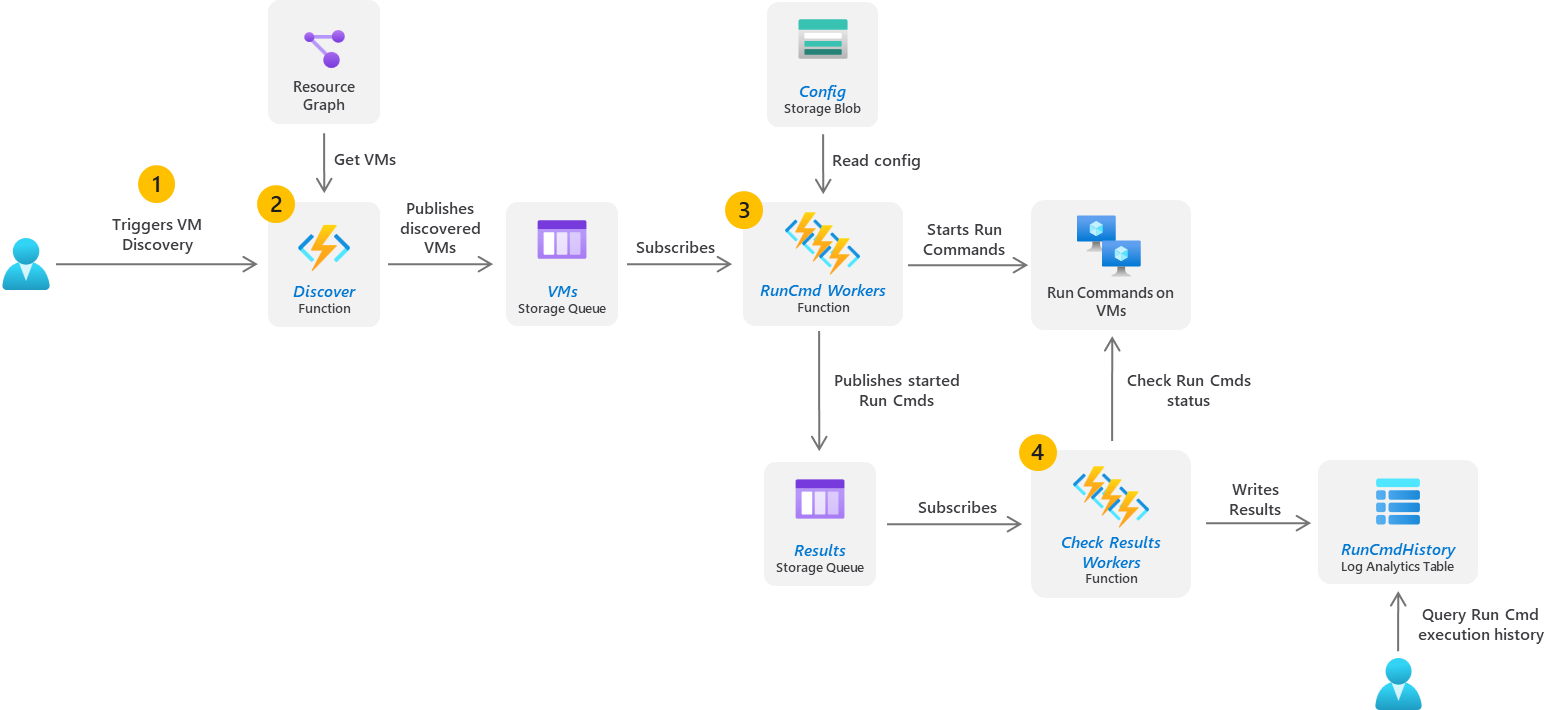The diagram below describes how this solution works at scale.
Run Function app with:
npm run start
Customize the local.settings.json file with your Azure Storage Account connection string and settings.
Trigger function using:
curl --location --request GET 'http://localhost:7071/api/discover'
Create a new file .env using the template .env.template and edit it for customization (e.g., cp .env.template .env && vi .env):
# Prefix for all resources
PREFIX="rc00"
# Existing Resource group name
RESOURCE_GROUP="runcmd"
# Azure region
LOCATION="northeurope"
# Entra/AAD Application Service Principal that will be created for the Azure Function App
APP_NAME="${PREFIX}-runcmd-app"
# Subscriptions array (space separated)
# Example: "11111111-1111-1111-1111-111111111111 22222222-2222-2222-2222-222222222222"
SUBSCRIPTIONS="11111111-1111-1111-1111-111111111111"
Run the the script scripts/create-resources.sh to create the Azure Resources. This script needs to be executed with App Registration permissions to create the Azure Function App Service Principal.
After deploying the Azure resources you need to collect the following values:
- Connection string for your storage account
- Storage account name
- Log ingestion endpoint
- Log ingestion rule immutable id
- The credentials of the new application service principal
Use these collected value to populate the following Azure Fucntion App App settings:
- AzureWebJobsStorage: "Connection string for your storage account"
- CONTROL_ACCOUNT_CONN_STRING: "Connection string for your storage account"
- CONTROL_ACCOUNT: "Your storage account name"
- LOG_INGESTION_ENDPOINT: "Your log ingestion endpoint"
- LOG_INGESTION_RULE_IMMUTABLE_ID: "Your log ingestion rule immutable id"
- AZURE_TENANT_ID: "Your tenant id"
- AZURE_CLIENT_ID: "Your service principal App id"
- AZURE_CLIENT_SECRET: "Your service principal password"
Use the file config/run-command.json to define the commands that will be executed by the Run Command. The file is an array of objects with the following structure:
[
{
"os": "Windows",
"cmd": "dir"
},
{
"os": "Linux",
"cmd": "ls"
}
]The solution collects this configuration from the Storage account. After customizing this file, you can update it in the storage account using the following script scripts/update-configuration.sh. You can change this configuration without the need to redeploy or even restart the Function App.

